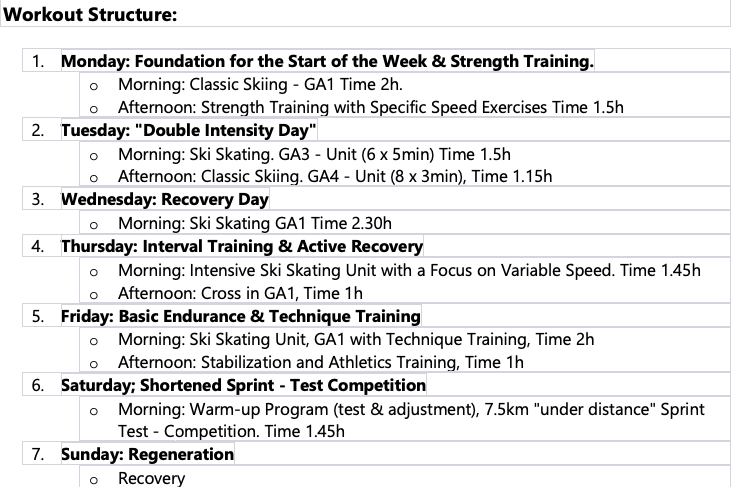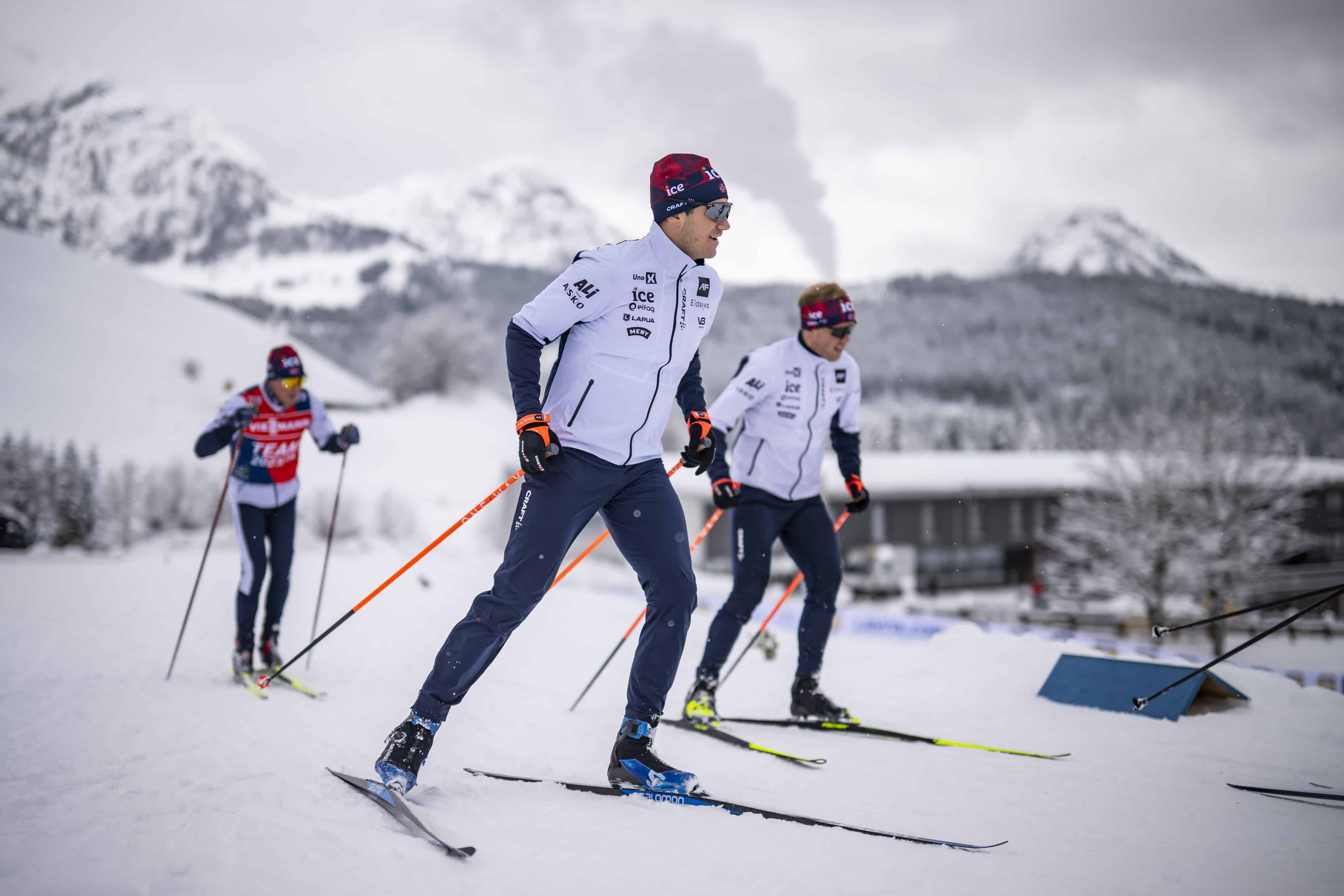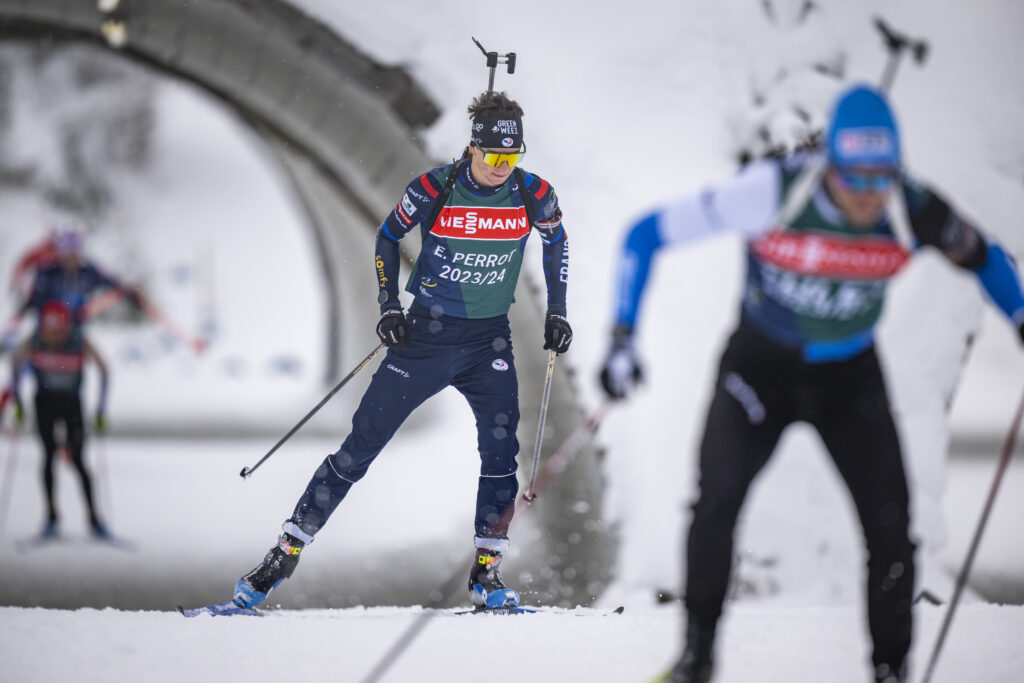In high-performance sport, especially in endurance sports such as cross-country skiing and biathlon, the road to success is paved with discipline, dedication and a well thought-out training plan that builds on one another.
Countless hours are already collected here in the summer in order to lay the perfect foundation for the increasingly intense workloads over the course of the season. Among the world's top cross-country skiers, we are talking about around 1,100 hours per season, which are collected and trained by the absolute stars of the scene. In this article, we take a detailed look at a typical week of training for these athletes and show what ambitious cross-country skiers can learn and possibly adopt for their own progress.
The world leaders in both sports are moving ever closer together and every second counts on race day. The foundations for these top performances are laid very early on in the season. While the "old" season usually only really comes to an end in mid-April, training starts again at the beginning of May. A lot of emphasis is still placed on individuality and general training. Training equipment such as the bike, running and mountain boots, the paddle boat and the odd strength unit are a must. Shooting also plays an increasingly important role in biathlon. Similar to physical training, a targeted build-up is also important here. As with physical training, you start with basic shooting. Here, a lot of emphasis is placed on technique, i.e. working precisely, handling and working out the shots cleanly. In most cases, these are even decoupled from running and usually take place before running training. Between 100 and 150 shots are completed per session. Of course, shooting is a very technical and complex matter. Perfect shooting involves a lot of work and a high number of repetitions! It is only gradually that the shooting training gradually merges more and more with the physical training.
From the end of May onwards, athletes will be back on the actual summer training equipment, the ski roller. These are training tools similar to skis, which enable cross-country skiers and biathletes to train the movements and stresses of winter in a very specific way. Here, too, it is generally important to get used to the processes and movements first. This is why we usually start with quiet, slightly longer sessions of around two hours. The roller skis are used until mid-November (when we finally hit the snow).
But then the units are already shorterbut more intens.
Here is an overview of which training equipment is used in which phase of the season and how the load levels relate to this.
Course of the season
| Seasonal phase | Focus & training tools |
| Transition phase | Regeneration, alternative activities Training methods: skiing, ski touring, walking, tennis, strength training |
| Summer training | Basic endurance training, technique training, strength and strength endurance training Training equipmentCycling, mountain running, shooting, climbing, cross-country running; strength training |
| Preparation phase | Specific competition training, group sessions and intensive interval training Training equipmentSki - roller, ski, treadmill, strength & stabilization training |
| Competition phase | Active regeneration & high-speed strength training Training equipmentSki (skating & classic), roller training |

To get an insight how, one week of training can look like. Here is a description of the main focuses.
 DescriptionAs you can see here, in the summer months a lot of attention is paid to basic endurance (training areas in GA1 - GA2, small volumes in GA3). The sessions are therefore mostly in the lower, calmer range. However, the sessions are usually somewhat longer (around 2 hours). A weekly average of 25 bis 30 hours.
DescriptionAs you can see here, in the summer months a lot of attention is paid to basic endurance (training areas in GA1 - GA2, small volumes in GA3). The sessions are therefore mostly in the lower, calmer range. However, the sessions are usually somewhat longer (around 2 hours). A weekly average of 25 bis 30 hours.
Now a week of training, including a description of the focal points, in the immediate run-up to the competition (e.g. mid-November).

Description: Compared to the previous weekly plan, you can clearly see how the number of hours per week is reduced, but the intensity is increased. The weekly average here is approx. 15 to 20 hours, but the plan contains 2 to 4 more intensive units in the GA3 to GA4 range.
What can ambitious athletes learn or even adopt?
There is no question that people who have a normal working life and daily routine do not have the opportunity to train for such a number of hours. What you could learn from competitive athletes, however, would be, for example the general structure and the Load distribution.
With the pros, you can see that the foundation for the winter is already laid in the summer. Only then does the body have the necessary foundation to withstand the long periods of exertion and peaks. So in order to have as much fun as possible in the snow and on the cross-country ski trail in winter, the summer can be used for alternative sports (cycling, mountain walking, roller skiing, strength training and many other activities). This prepares the body, its coordination, endurance and strength well
Depending on your ambitions and goals, you could also decide to work with a trainer (also possible online). This enables personal and individual support and planning
However, the most important thing about sport is always that you enjoy your time outdoors in nature, alone or in a group, and see it as a time-out for yourself, your mind and a benefit for your body!
Here are a few more tips for ambitious athletes
- Performance diagnostics in spring. This is a basic check of your general health, which is a prerequisite for doing sport. You will also be given your personal training zones, which you can use as a guide when doing sport.
- Set goals & make a plan for them (signing up for a sporting event may provide additional motivation!)
- Make an overview of the course of the year and pick out possible time slots in your stressful working life and everyday life.
- Set realistic goals and plan them well.
- Have fun & enjoy!
- Listen to your body and give it a rest when it needs it. Take special care if you have a cold! It is better to take too long a break than to start too early! This will prevent a recurrence.
- Find a network or training buddies to make training even more fun!

Conclusion
Wie sich in der kurzen Zusammenfassung herauskristallisiert, gehören einige Trainingsstunden und ein gut durchdachter Trainingsplan zur Grundvoraussetzung für weltklasse Leistungen im Skilanglauf & dem Biathlonsport. Was jedoch auch deutlich wird, ist, dass sich eine gewisse Grundfitness positiv auf die Langlauftechnik, die Effizienz und den Spaß auf der Loipe auswirkt. Habt also Spaß bei jeglicher, körperlicher Sportaktivität und nehmt diesen Schwung & Spaß mit auf die Langlaufloipe. Viel Freude beim Training & Kilometer sammeln!
Text D.S.
Bilder K.Voigt_Fotografie

